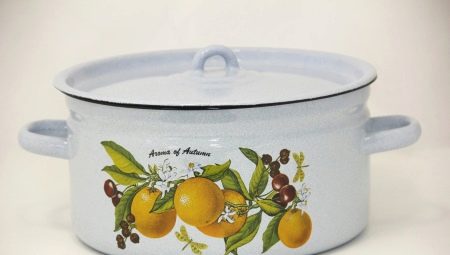Experienced housewives know that the quality of a dish depends not only on how fresh the products are used for its preparation, but also on the quality of the dishes in which it is prepared. Modern dishes have a lot of properties that make routine cooking a real pleasure: non-stick, easy to clean, without any unpleasant odors released when heated. Pots and pans of the new generation are an excellent choice for modern housewives.
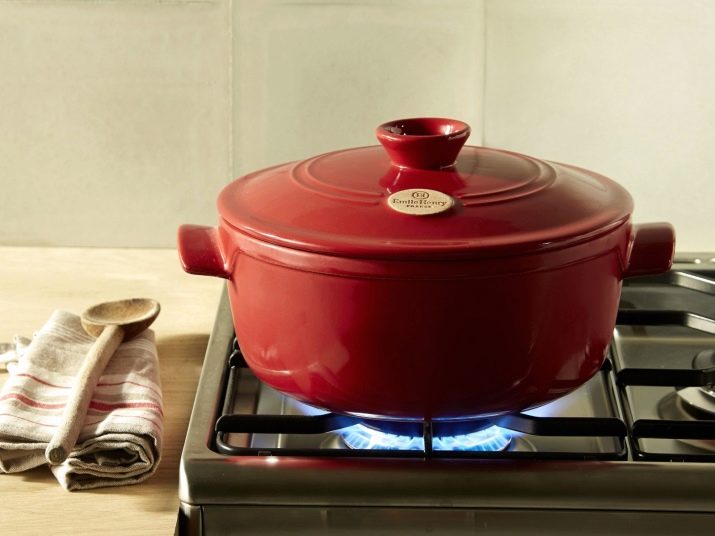
Features
A 2-3 liter pan is one of the most commonly used in everyday life. It can boil cereals or pasta, mashed potatoes. In a three-liter pan, it is best to cook light soups for one or two days, which is ideal in the summer.
In addition, in a container of this volume it is very convenient to cook compote and immediately drink it.
The main requirements for such a pan:
- easy to wash;
- odorless;
- not subject to corrosion.
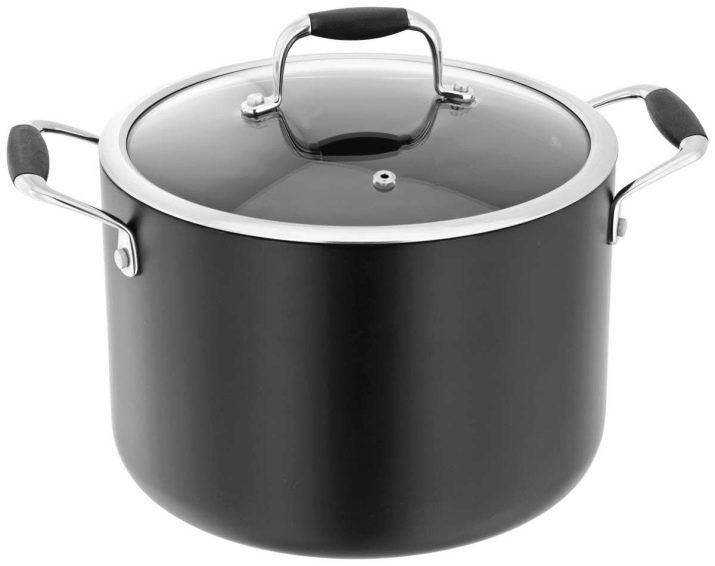
Production material
The first and main parameter for choosing a pan is the material from which it is made. The most common now are:
- aluminum;
- cast iron;
- enamelled metal;
- ceramics;
- heat resistant glass;
- Teflon-coated metal
- stainless steel.
Aluminum pans are lightweight, cheap and durable, and easy to use. But aluminum can be deformed. In addition, it emits toxic substances when heated, which can give an unpleasant aftertaste to food that is cooked in dishes made of this material. If acidic, salty, or alkaline products are placed in aluminum cookware, its oxide film is damaged.Such dishes cannot be cleaned with a metal scraper, but due to its thin-walled food particles constantly stick to it.

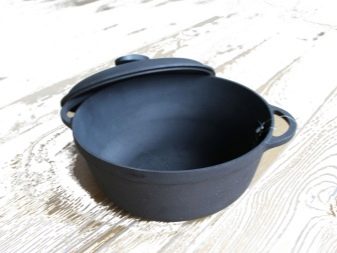
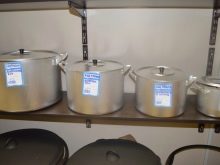
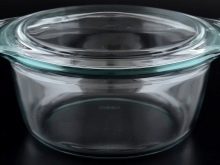
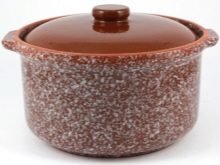
Cast iron cookware is the most durable, its non-stick properties are very high. In it you can cook, fry or stew foods for a long time. It is common for cast iron to heat slowly, but at the same time retain heat for a long time. He will not suffer if it is cleaned with an abrasive.
The disadvantages include the high cost, the severity of the dishes, the tendency to corrosion.
Enamel-coated dishes are ideal for making soups, jelly, stewed fruit, side dishes. But the enamel is very fragile, it can crack even with a slight blow. Enamel is destroyed, even if you handle the pan carefully. It cannot be cleaned with an abrasive. As soon as a crack or chip appears on the enameled pan, it must be discarded, otherwise harmful substances will get into the cooked food.

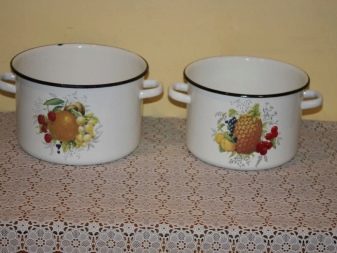
Ceramic options, as well as heat-resistant glass pans, have a great aesthetic appearance. They ensure the preservation of the vitamin and taste properties of the products. They have good heat preservation and resistance to mechanical stress. In such dishes, you can bake food, it is non-stick. But both types of material are fragile, fragile, and also poorly tolerate temperature differences.
More durable are pots with an aluminum base and a ceramic coating.
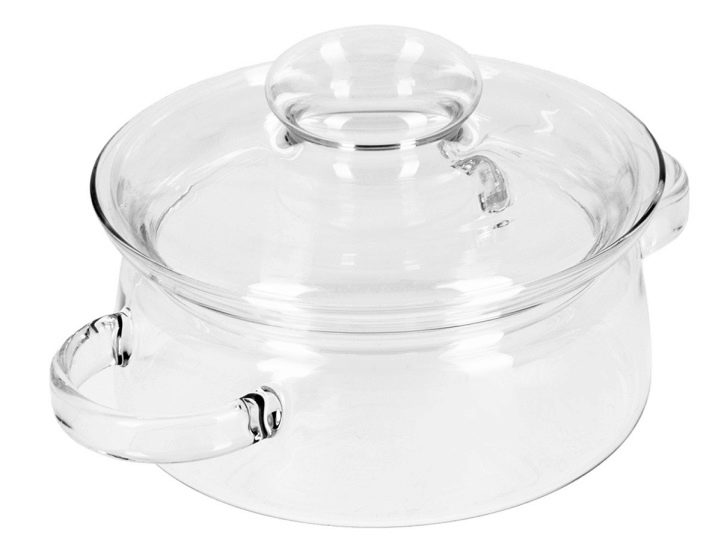
As for dishes with Teflon spraying, it weighs little and has excellent non-stick qualities. You can cook absolutely any dishes in it. 2 L pots can be used as a milk cooker, they can boil soup or stewed fruit, pasta and cereals. However, Teflon coating must be handled with care.because it’s easy to scratch.
If it is damaged, toxic substances will enter the food.
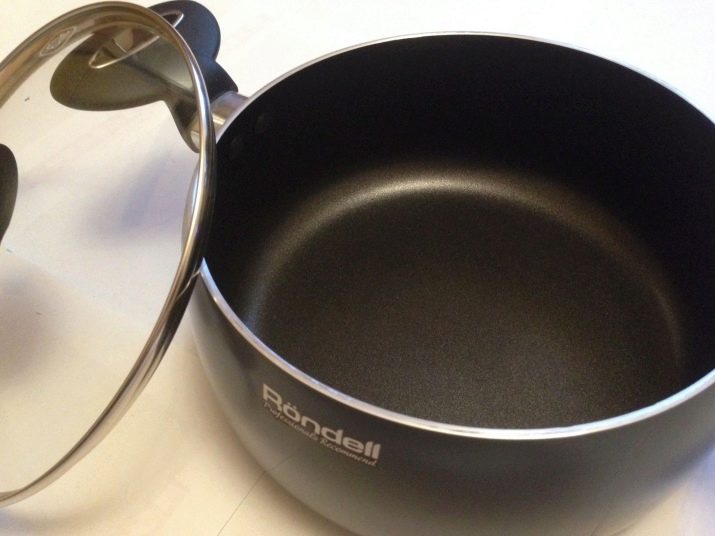
Stainless steel for making dishes is most often used medical, with the content of chromium and nickel. Such pans are strong and durable, they are immune to mechanical stress, hygienic, beautiful and do not lose their attractive appearance. No toxins are released when heated from stainless steel. The disadvantages of this material can be called its high cost, especially if the dishes are made by a well-known manufacturer.
It is impossible to clean stainless steel with aggressive abrasives, as well as putting such a pan on a hot stove is empty, otherwise blue-green stains may appear.
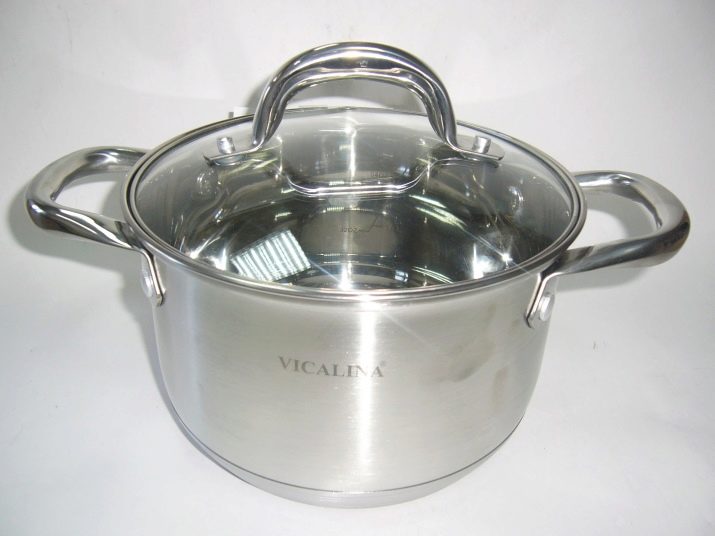
The nuances of choice
When choosing the right pan certain rules must be followed.
- The dishes must be intact, the presence of cracks, scratches, color inhomogeneities, stains, dots is unacceptable on it.
- Handles should be metal and hollow. Plastic handles, when heated, smell unpleasantly and melt, the tree is easily ignited. You should also make sure that the handles are firmly attached to the pan - screwed or welded.
- If you purchase pots with lids, it is best to stay on glass pans equipped with small holes so that steam can escape.
- When choosing pots, it makes sense to purchase them in sets - small, medium and large. A thick-walled stew-pan and a milk cooker with or without a whistle can also be included in the kit.
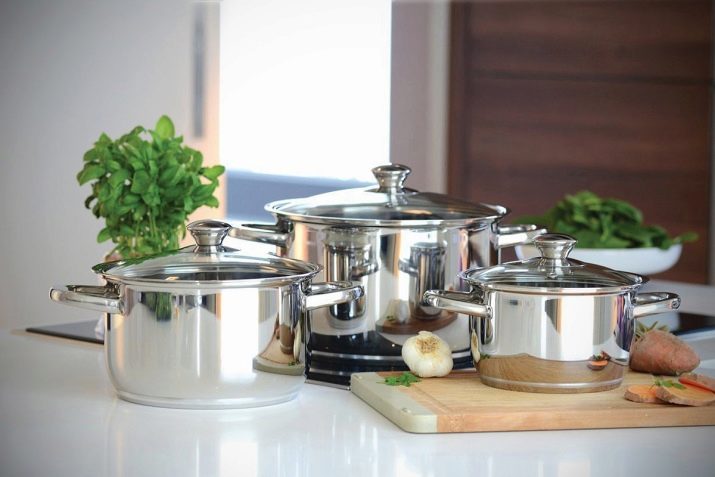
Manufacturers
Among the most popular manufacturers of small pots, there are several.
- Bergoff - one of the most famous and sought-after companies in the Russian market of dishes. Brand products are of high quality and affordable price. The most durable is the line of thick-walled dishes.

- Lessner - An English company producing aesthetically attractive externally products. In addition to aesthetics, dishes have a long service life, while it does not cost too much.
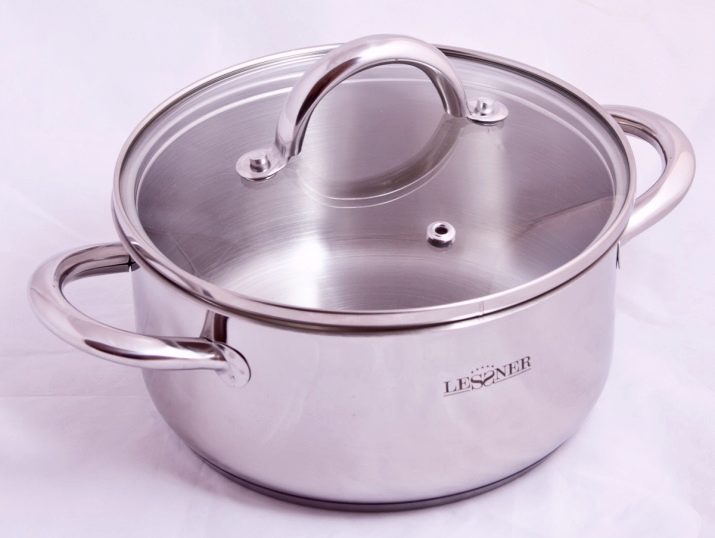
- Firm Luxstahl produces both large and small stainless steel pans. The products are equipped with a triple bottom, are very durable, have a long service life.
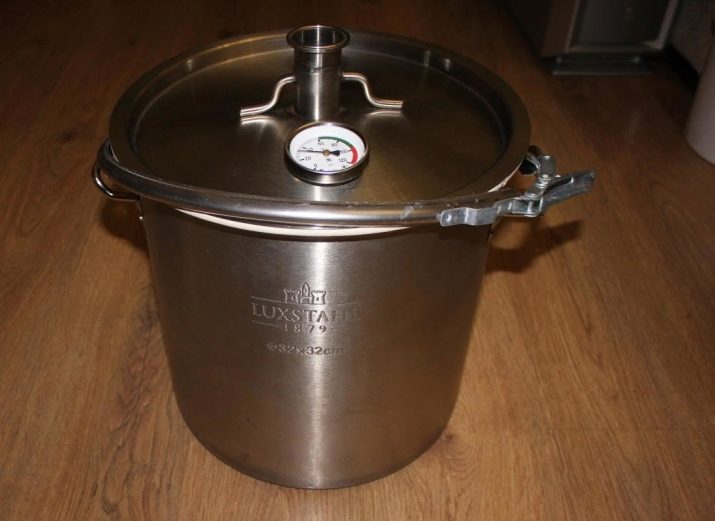
- Gipfel Company produces dishes, the material for which is a high-quality medical alloy. The only drawback of the company's products is the high price. Customer reviews about this dish are mixed: many are dissatisfied with pans, but there are no complaints about pots.
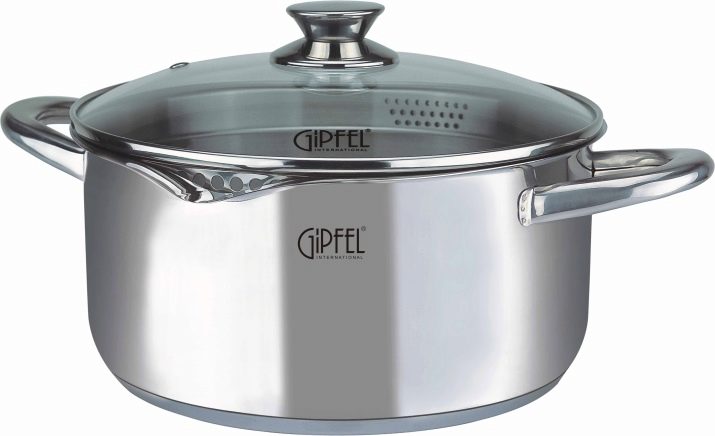
How to choose a quality 2-liter pan, see below.
